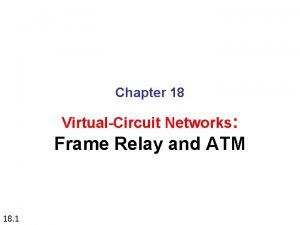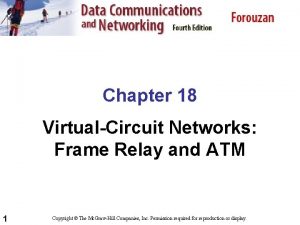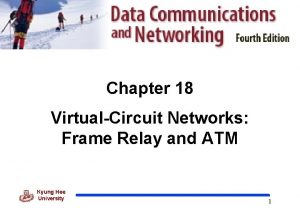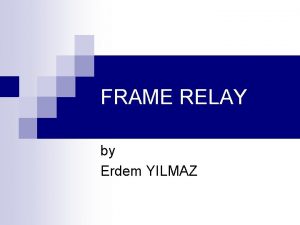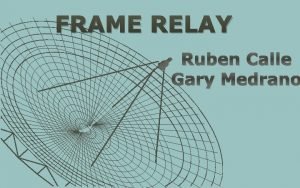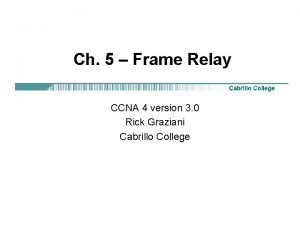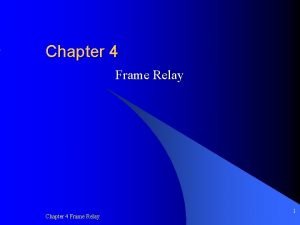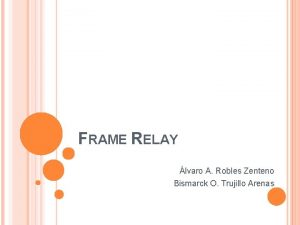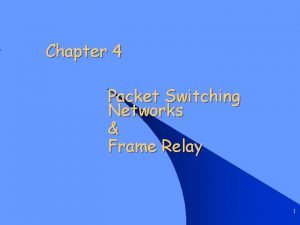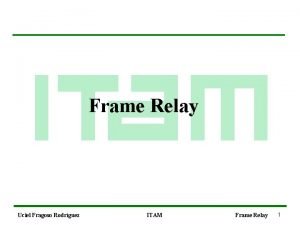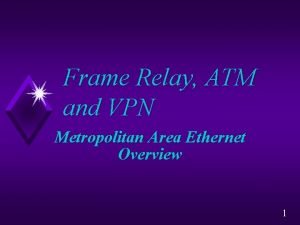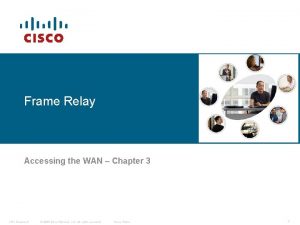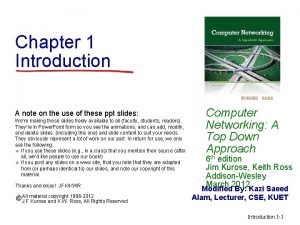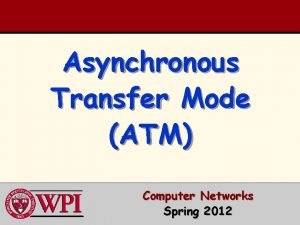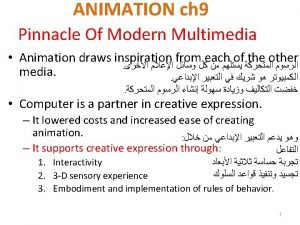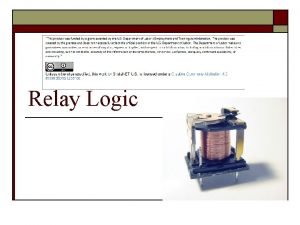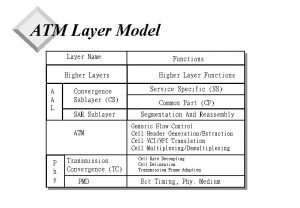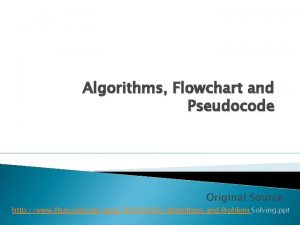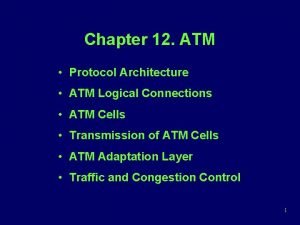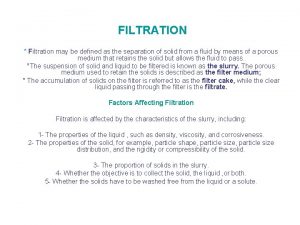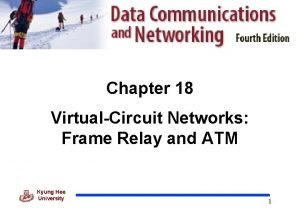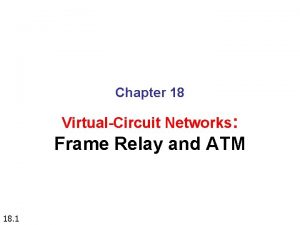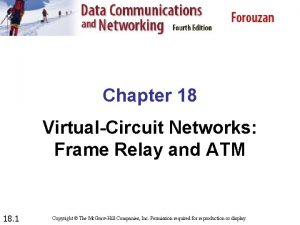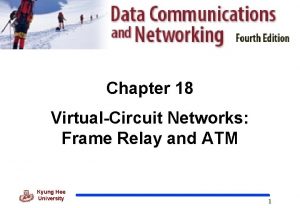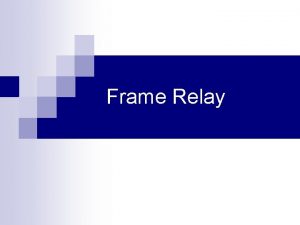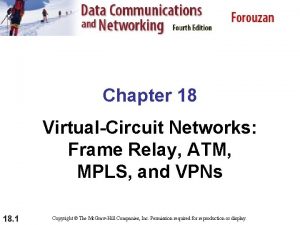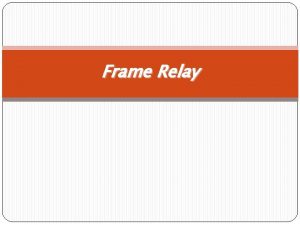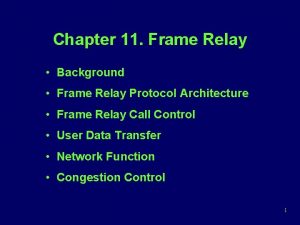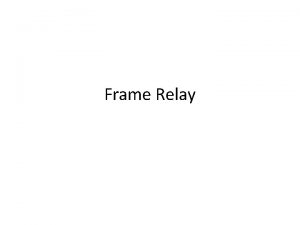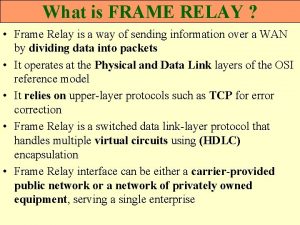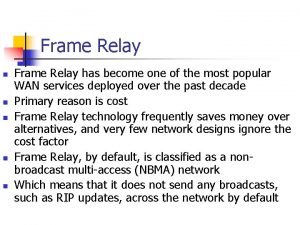Chapter 18 VirtualCircuit Networks Frame Relay and ATM






































- Slides: 38

Chapter 18 Virtual-Circuit Networks: Frame Relay and ATM 1 Copyright © The Mc. Graw-Hill Companies, Inc. Permission required for reproduction or display.

18 -1 FRAME RELAY Frame Relay is a virtual-circuit wide-area network that was designed in response to demands for a new type of WAN in the late 1980 s and early 1990 s. Topics discussed in this section: Architecture Frame Relay Layers Extended Address FRADs VOFR LMI 2

Figure 18. 1 Frame Relay network 3

Note VCIs in Frame Relay are called DLCIs. 4

Figure 18. 2 Frame Relay layers 5

Note Frame Relay operates only at the physical and data link layers. 6

Figure 18. 3 Frame Relay frame 7

Note Frame Relay does not provide flow or error control; they must be provided by the upper-layer protocols. 8

Figure 18. 4 Three address formats 9

Figure 18. 5 FRAD 10

18 -2 ATM Asynchronous Transfer Mode (ATM) is the cell relay protocol designed by the ATM Forum and adopted by the ITU-T. Topics discussed in this section: Design Goals Problems Architecture Switching ATM Layers 11

Figure 18. 6 Multiplexing using different frame sizes 12

Note A cell network uses the cell as the basic unit of data exchange. A cell is defined as a small, fixed-size block of information. 13

Figure 18. 7 Multiplexing using cells 14

Figure 18. 8 ATM multiplexing 15

Figure 18. 9 Architecture of an ATM network 16

Figure 18. 10 TP, VPs, and VCs 17

Figure 18. 11 Example of VPs and VCs 18

Note that a virtual connection is defined by a pair of numbers: the VPI and the VCI. 19

Figure 18. 12 Connection identifiers 20

Figure 18. 13 Virtual connection identifiers in UNIs and NNIs 21

Figure 18. 14 An ATM cell 22

Figure 18. 15 Routing with a switch 23

Figure 18. 16 ATM layers 24

Figure 18. 17 ATM layers in endpoint devices and switches 25

Figure 18. 18 ATM layer 26

Figure 18. 19 ATM headers 27

Figure 18. 20 AAL 1 28

Figure 18. 21 AAL 2 29

Figure 18. 22 AAL 3/4 30

Figure 18. 23 AAL 5 31

18 -3 ATM LANs ATM is mainly a wide-area network (WAN ATM); however, the technology can be adapted to local-area networks (ATM LANs). The high data rate of the technology has attracted the attention of designers who are looking for greater and greater speeds in LANs. Topics discussed in this section: ATM LAN Architecture LAN Emulation (LANE) Client/Server Model Mixed Architecture with Client/Server 32

Figure 18. 24 ATM LANs 33

Figure 18. 25 Pure ATM LAN 34

Figure 18. 26 Legacy ATM LAN 35

Figure 18. 27 Mixed architecture ATM LAN 36

Figure 18. 28 Client and servers in a LANE 37

Figure 18. 29 Client and servers in a LANE 38
 Frame relay layers
Frame relay layers Frame relay and atm
Frame relay and atm Frame relay vs atm vs mpls
Frame relay vs atm vs mpls Risanuri hidayat
Risanuri hidayat What is frame relay
What is frame relay Frame relay and x.25
Frame relay and x.25 Advantages and disadvantages of frame relay
Advantages and disadvantages of frame relay Frame relay caracteristicas
Frame relay caracteristicas Frame relay lmi
Frame relay lmi Ccna frame relay
Ccna frame relay Frame relay overview
Frame relay overview Frame relay packet tracer
Frame relay packet tracer Frame relay osi
Frame relay osi Frame relay architecture
Frame relay architecture Osi bismarck
Osi bismarck Frame relay packet switching
Frame relay packet switching Picture frame
Picture frame Pasado de frame
Pasado de frame Frame relay vs vpn
Frame relay vs vpn Frame relay
Frame relay Transmission mac
Transmission mac Osi reference model ppt
Osi reference model ppt Atm computer network
Atm computer network Datagram network and virtual circuit network
Datagram network and virtual circuit network Frame by frame animation programs
Frame by frame animation programs Pengertian animasi frame by frame
Pengertian animasi frame by frame Basestore iptv
Basestore iptv Relay logic gates
Relay logic gates Advantages of relay
Advantages of relay Internet relay chat advantages and disadvantages
Internet relay chat advantages and disadvantages Name the atm layers and their functions.
Name the atm layers and their functions. Difference between pseudocode and flowchart
Difference between pseudocode and flowchart Atm protocol architecture and logical connection
Atm protocol architecture and logical connection Plate and frame filter advantages and disadvantages
Plate and frame filter advantages and disadvantages Euler
Euler Wired data transfer
Wired data transfer Scs 770069 power relay
Scs 770069 power relay Venn diagram symbols
Venn diagram symbols Team acrostic poem
Team acrostic poem
